5 Great Egg-Layers With Fluffy Feathered Feet
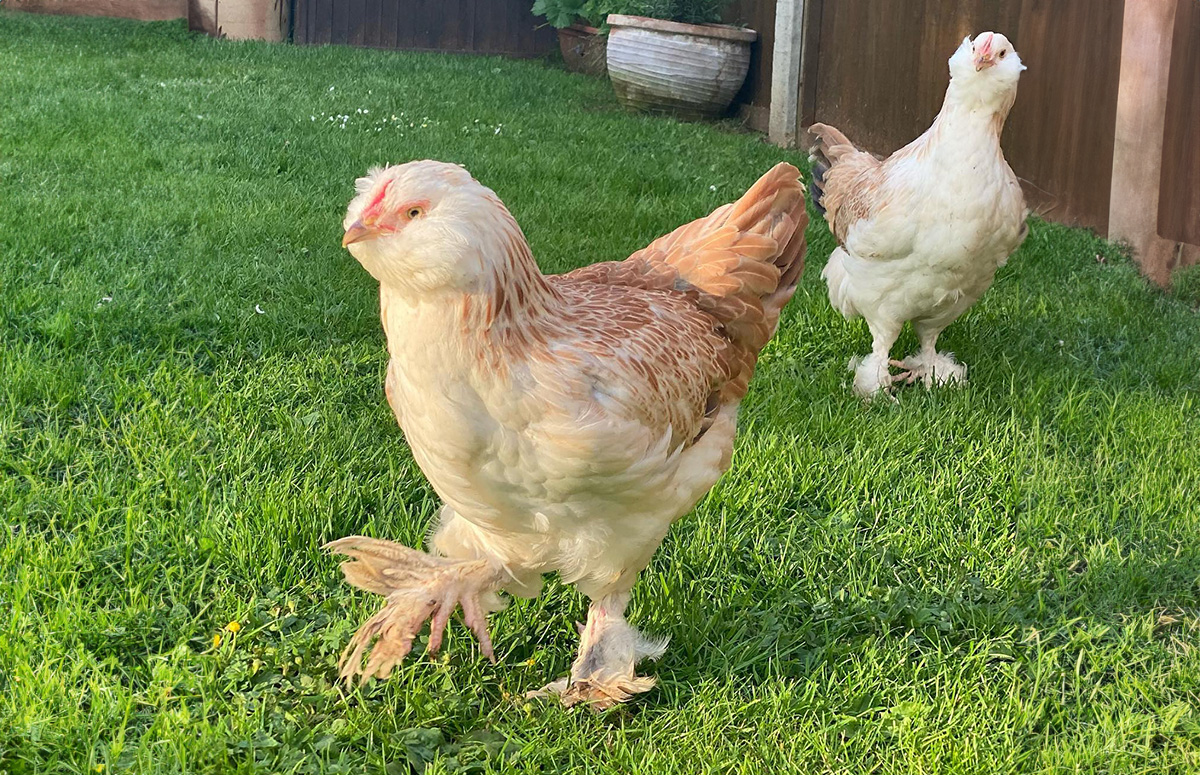
Looking for a chicken breed with the best of both worlds, the looks, and the eggs? There are some stunning chicken breeds with beautiful feathered legs and feet that lay a decent amount of eggs every week. They’re suited to show off on social media or to enjoy their fresh eggs for breakfast.
Let’s review our favorite top 5 excellent egg layers with fluffy feet.
1. Brahma
Brahma chickens are giant, impressive, heavy-weight robust chickens with striking beauty. They look massive and carry many feathers extending to their legs and covering their toes.
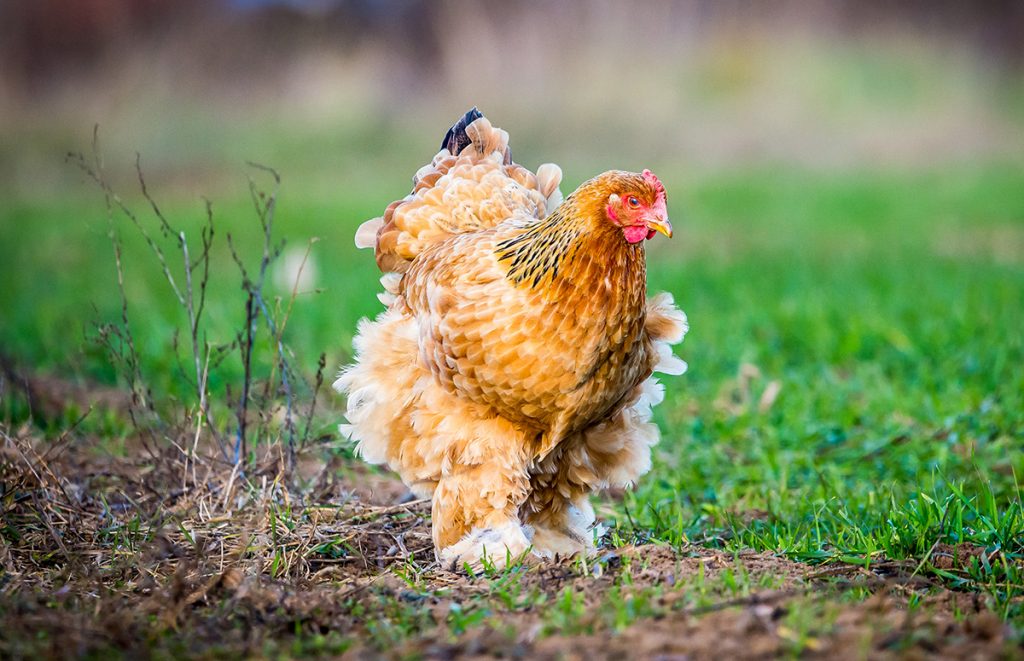
Their fluffiness makes them look even more oversized, and their heavily feathered feet make them look even more impressive.
Looks & personality
Brahmas are big chickens. With their 30 inches and evil look, they can look pretty scary, but they’re an absolute delight to have in your flock. Because of their weight, they can not jump or fly, so no high fence is needed to keep them inside the run.
Brahmas are calm and docile chickens that are happy to live in confinement. They are usually the tallest flock members, and the smaller birds won’t bother them.
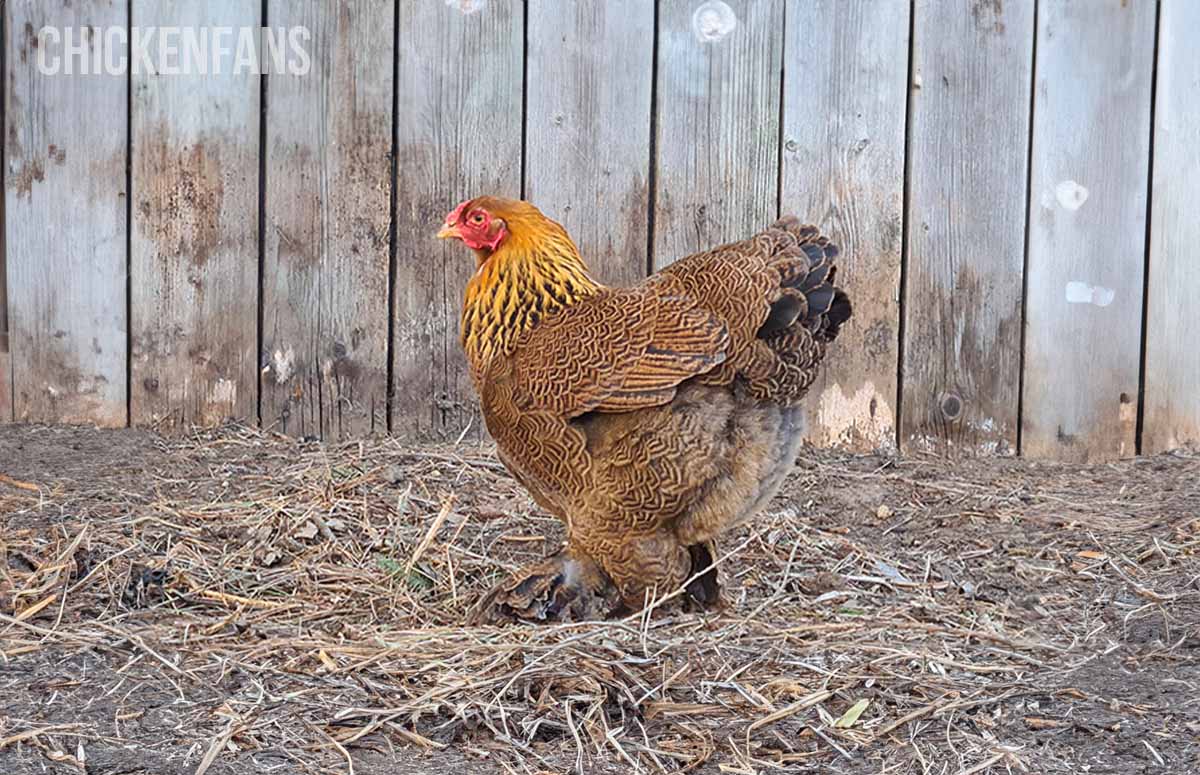
They typically stick around the coop and aren’t too wide-ranging. Brahmas are laid back and won’t scratch the soil like Leghorns or other lightweight Mediterranean types.
Egg Laying skills
Most Brahmas sold by commercial hatcheries are excellent egg layers, as they were bred to lay many eggs. They will bring you up to 250 eggs yearly, more than 4 per week.
But some Brahma strains are bred for beauty and to participate in poultry shows. These strains will only bring up to 150 eggs yearly.
Brahmas are popular because most keep laying during winter, while other breeds significantly slow their egg production.
You’ll get many eggs between October and May, as they tend to go broody during summer. Broody chickens stop laying temporarily to sit on their eggs.
Their occasional broodiness is something to remember if you’re not planning to hatch eggs.
2. Faverolles
Faverolles chickens have a distinctive look with their large body, fluffy beards, and muffs. These bearded beauties are large and heavy birds and are a cross of multiple chicken breeds.
They’re fluffy and heavily feathered with plumage on shanks and toes. Faverolles make extraordinary pet chickens. They’re sweet, friendly, kind, and great assets to your backyard chicken flock.
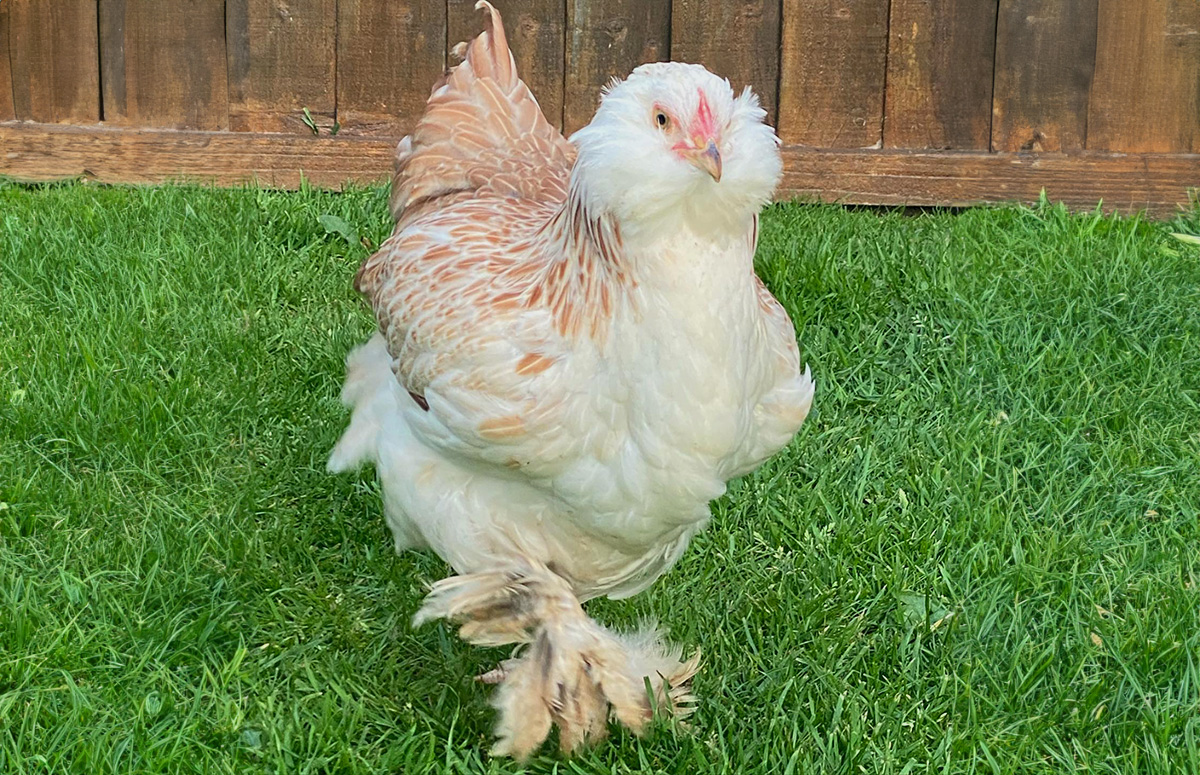
Looks & personality
Nowadays, Favorelles chickens are mainly kept as show birds or to participate in pageants, but they were initially bred as table birds. They’re a large breed with roosters weighing approximately 11 pounds (5 kg) and hens tipping the scale at 9 pounds (4.1 kg).
Faverolles come in various colors, but the most popular color is Salmon. Salmon Faverolles are stunning-looking birds, with the females having a lovely brown and cream color and the males darker with a (light) brown and black color.
The breed is not aggressive or assertive; even the roosters are known to be quiet and calm. However, this gentle nature also makes them an easy target for bullying as they are seldom on top of the pecking order.
Egg laying skills
Faverolles are decent egg layers, laying three to four large eggs weekly. That’s up to 200 eggs per year! They start laying at 20-22 weeks and continue to lay during the winter because of their cold hardiness.
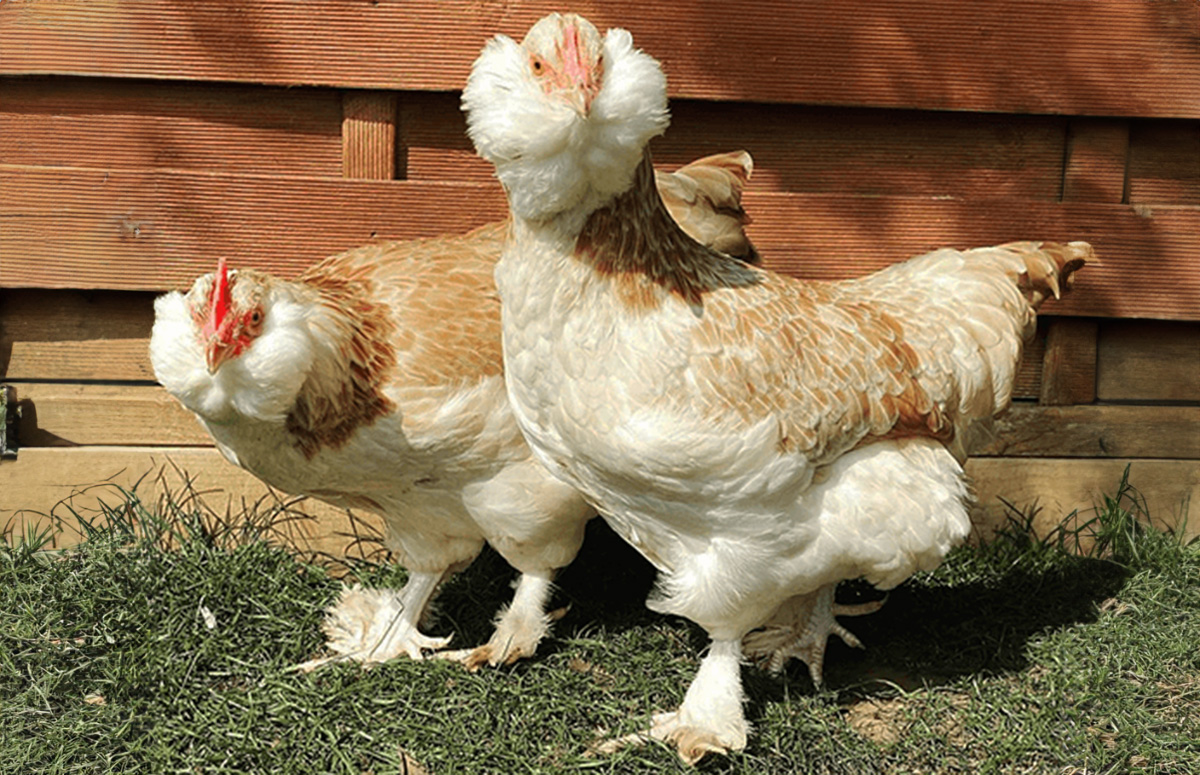
There are plenty of articles to be found online telling you a Faverolles lays pink or purple eggs, but most Faverolles lay brown eggs. Some eggs will look pinkish or purple, resulting from reddish pigments in the bloom, the protective cover on the egg’s surface.
3. Marans
The Marans is a French breed of chickens that lay beautiful dark brown eggs. They come in different varieties, and the French variety has lightly feathered feet. Their legs and feet are not as fluffy as other breeds on this list, but their beautifully colored eggs make up for it.
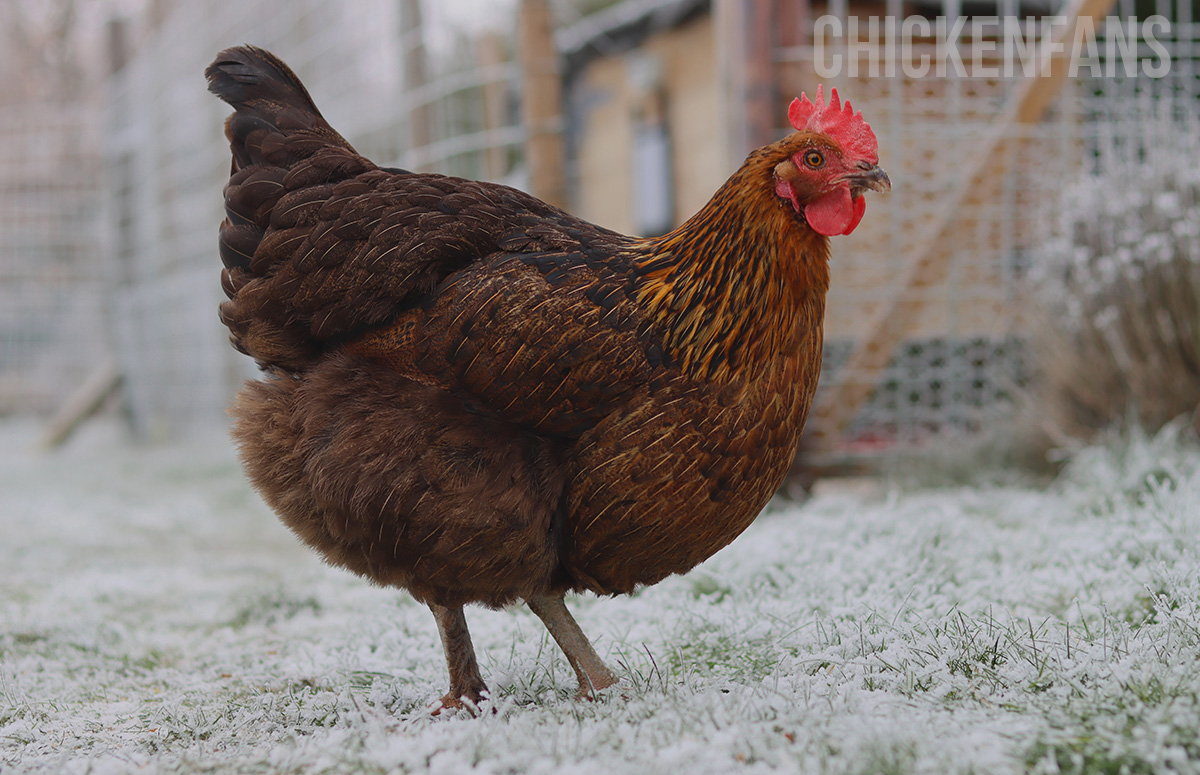
Looks & Personality
Marans chickens are relatively large, bred as a dual-purpose breed to be kept as meat and egg birds. The French Marans are a breed that has lightly feathered feet, whereas English Marans don’t have fluffy feet.
The feathers are primarily found on the outside of the feet and shanks. There are also many hybrid Marans, created by hatcheries by crossbreeding Marans with other chickens. One of the most known hybrid is the Midnight Majesty Marans, a beautiful black sex-linked chicken.
One important thing to remember when owning a Marans is they’re pretty flighty. This means you’ll have to install a high enough fence so they won’t jump or flap over it. Installing a fence of 6 feet tall is a minimum.
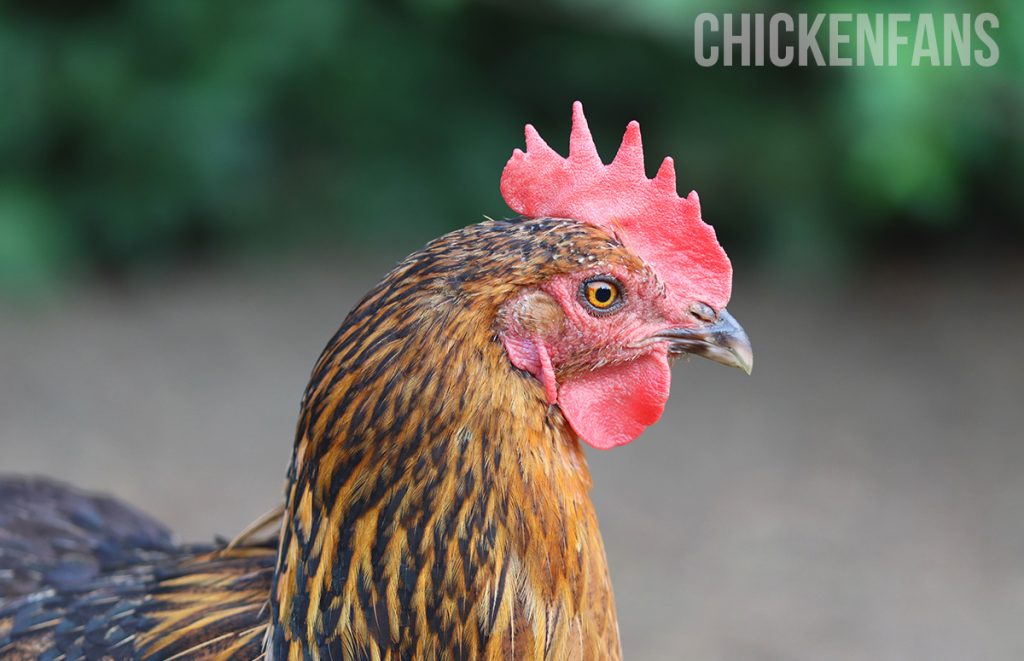
Marans are curious birds that love to wander off in your backyard and your neighbor’s if they have the chance. They love free-ranging and are, therefore, best kept in a large garden or enclosed pen.
Marans are very friendly and calm birds, but that does not mean they’re pet chickens that can easily be picked up and held. They’re no lap chickens, but they are never aggressive and suitable when you have small children.
Egg Laying Skills
Marans are good egg layers and lay up to 200 eggs annually. The eggs are relatively large in size and have a lovely dark brown color. Most of their eggs are situated on the darker side of brown, but it’s exceptional for Marans to lay really dark brown eggs, as you see on Instagram posts. So don’t be disappointed if your Marans lays normal dark eggs instead of incredible dark eggs.
Marans are a cold hardy breed, but they tend to stop laying in the winter months and resume their egg production when days get longer and warmer.
4. Cochin
The Cochin chicken is among the heaviest and largest chicken breeds in the world, and because of its fluffy and unique appearance, it is pretty popular on social media.
The breed is heavily feathered from head to toe and a joy to look at. They’re also extremely docile and family-friendly chickens.
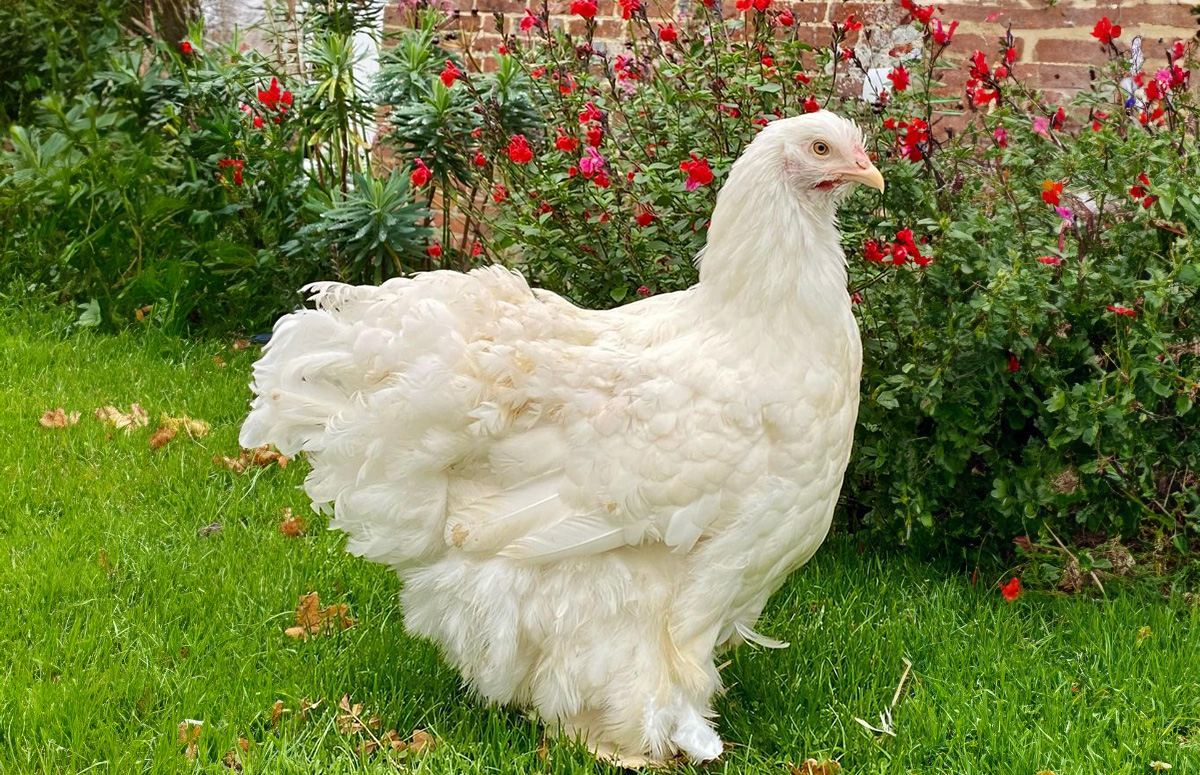
Looks & personality
Cochins are easily recognizable due to their excessive foot feathering and dense plumage, giving them their fluffy appearance.
All Cochin chicks are born with feathers on their feet. The dense feathering all over their body makes them very cold-hardy, and they stand extreme weather quite well.
But this makes them less fond of hot weather. It’s best not to keep Cochin chickens when living in a tropical environment.
Due to their build, Cochin chickens are prone to obesity. They’re also quite lazy and not the best foragers. To keep them healthy, don’t feed them too many table scraps.
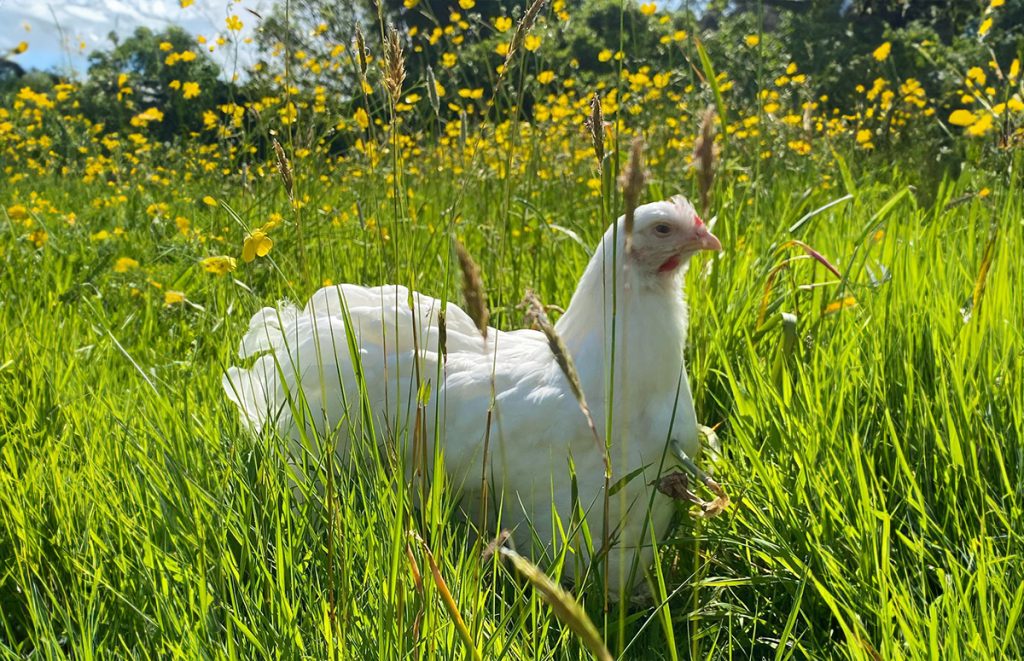
The breed is mainly kept as an ornamental bird, and due to their striking appearance, they do a great job! Cochins are a friendly and cuddly species; they make an excellent pet chicken, even for those not participating in poultry shows.
Egg Laying Skills
Cochins are not the best egg layers on this list, but they still bring a decent amount of eggs to the table. They lay up to 150 eggs per year, that’s 2 to 3 weekly.
All eggs are light brown to brown and large in size. They usually keep laying during winter, although egg production may slow down.
But, there’s a major but, Cochin chickens are seen as one of the broodiest chickens in the world and are often used to hatch other chickens’ eggs.
This means they will stop laying regularly due to their broodiness, which is something to keep in mind, especially if you’re not planning to hatch eggs.
5. Belgian Bearded d’Uccle
The Belgian Bearded d’Uccle is a true Bantam breed, meaning it has no large fowl family. This breed, originating in Uccle, Belgium, is amiable and docile and is easily tamed or learned to do tricks.
They’re not the best egg layers, but they bring up to 100 eggs per year to the table. But because of their rareness, gentle nature, and unique looks, they deserve a place on this list.
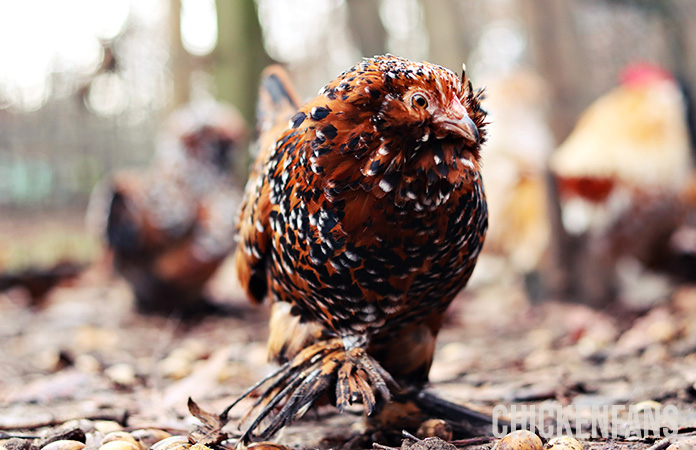
Looks & personality
Because of their size, Belgian d’Uccles can easily be kept in a small run; check out the space requirements for bantams in our ‘Coop Size Calculator‘.
They are a joy to have around, are popular with children, and are easily tamed. Not only do they have lovely personalities, but they are a true joy to look at.
Their most beautiful and popular color is undoubted ‘Millefleur’, meaning ‘A Thousand Flowers’. The breed has an almost vertical tail and a prominent chest.
They are most common in Belgium, and its neighboring countries, France, Netherlands, Germany, and the UK, but are also available in the US.
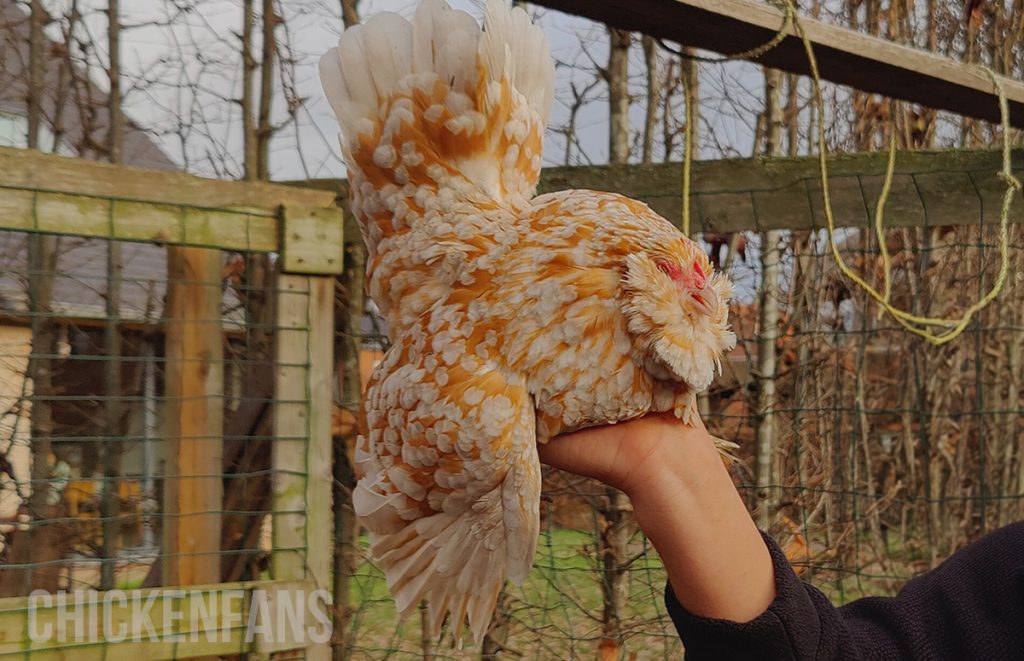
This breed is not cold nor heat hardy. This is not the breed for you if you live in a climate with extreme weather conditions. Like most small chicken breeds, Bearded d’Uccles do not like muddy or wet weather.
Egg Laying skills
Belgian Bearded d’Uccles are not the best layers. They lay around 100 eggs yearly, all cream-colored and small-sized. They also tend to go broody quickly, which can be annoying if you’re not planning on hatching eggs. But they’re excellent mothers and are great at sitting on their own and other chickens’ eggs.
Other popular feathered feet chickens
Other chicken breeds are available with fluffy feet, but their egg-laying skills are not as excellent as those mentioned above (excluding the Belgian d’Uccle, added because of its looks).
Don’t worry if you’re still unsure which breed to keep; there are plenty to choose from. We’ll address a few other chicken breeds with feathered feet but less likely to bring many eggs to the table.
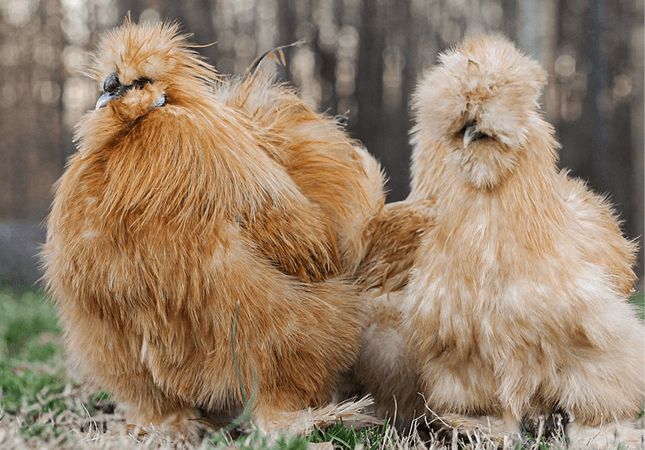
- Silkies. These fluffy birds are an absolute family favorite. They’re cuddly and sweet and make an excellent pet chicken. However, Silkies will only bring a maximum of 3 small eggs per week and are extremely broody, meaning they’ll frequently stop their egg production due to broodiness.
- Pekin Bantams. These chickens look like a miniature version of the Cochin but are unrelated. They lay up to 150 small-sized eggs yearly. Pekin Bantams are sweet and docile, and easy to care for.
- Belgian Bearded d’Anvers. This breed is mainly kept as a show bird, but they are ok egg layers, laying up to 3 small white eggs per week.
- Frizzle chicken. A Frizzle chicken is a breed, but it’s mostly seen as a chicken variety instead of a breed. There are frizzled varieties of chicken breeds, such as Polish, Silkies, and Cochins. Depending on the frizzle variety, you’ll get around 2-3 eggs per week.
Things to remember when keeping heavily feathered chickens
Chickens with feathered feet are more prone to several issues. There are some things to remember when housing and caring for a heavily feathered chicken breed.
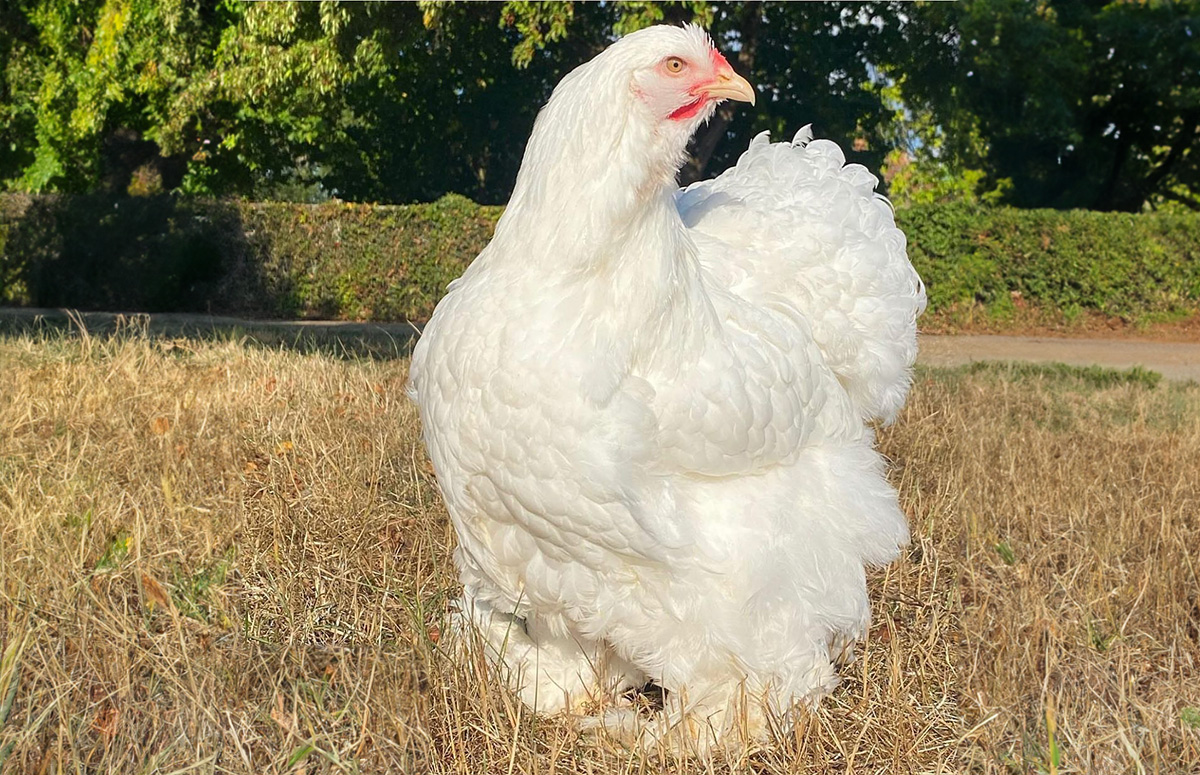
- They don’t like mud or wet environments. Place the coop in the dryest area of the backyard, and try to keep it as dry as possible using leaves, extra dirt, or wood chips.
- Look out for frostbite. The feathered feet may ensure some extra insulation, but it doesn’t help anymore when their feet are soaked.
- Check regularly for scaly leg mites. Chickens with heavily feathered feet are more prone to scaly leg mites, and it’s less easy to spot the problem due to the heavy feathering.
- Invisible feet problems. Checking your chickens’ feet regularly is always important, whether you keep heavily feathered chickens or not. Because health issues or problems are more difficult to spot on feathered feet, you’ll need to check your fluffy friends more regularly than other breeds to ensure they’re ok.
Further Reads
There are hundreds of chicken breeds! If you want to get to know them all, rare and common, go to our ‘All Chicken Breeds & Types Worldwide: List of 500+ Breeds‘.
Can’t get enough of fluffy chickens? Check out our article ‘10 Fluffy Chickens That Are Kid-Friendly‘.
If you want to learn more about chicken breeds that lay colored eggs, check out our article ‘10 Popular Chickens With Colored Eggs‘.
Credits Featured Image: @fabulous_faverolles (IG)






















